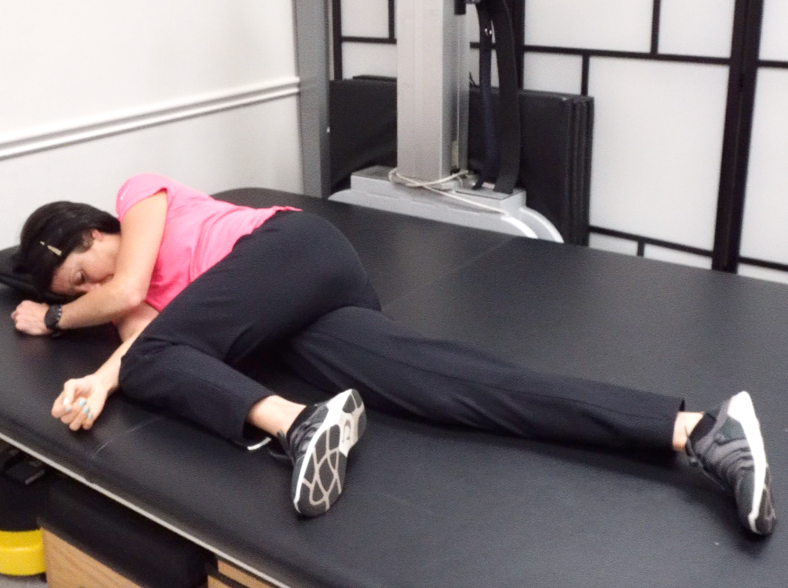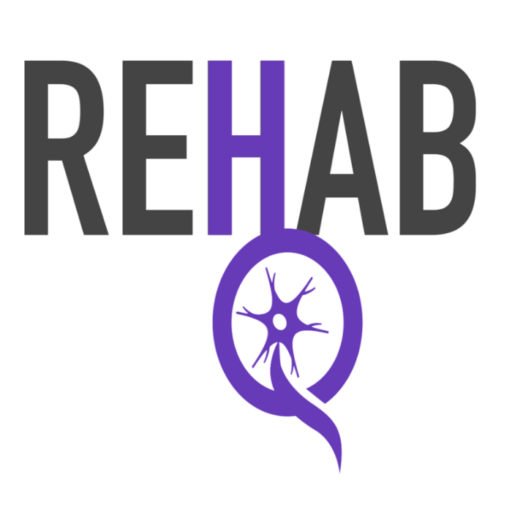Walking after a stroke is important to a ton of stroke survivors. A stroke causes hemiplegia (weakness on one side of the body which can make standing and walking difficult. With this in mind, I get a ton of questions from stroke survivors and their caregivers……Where do I start? How do I start? What are the best exercises if I am bed bound or wheelchair-bound? This is just to name a few. Long story short, most people feel lost and was the inspiration behind this post.
Building a strong foundation is critical to making a smooth transition from “wheelchair dependent” to (hopefully) becoming a community ambulator (primarily walking versus using a wheelchair). I encourage you, spend as much time as you need to on these exercises. Try not to rush through them. Your future self and your future goals will thank you for it ?
What are the key components to focus on in the early stages of stroke recovery?
Whether your goal is to walk or just to start regaining control of your body movements, there are some key “areas” you will want to focus on.
- Regain control of the “hip stabilizer” muscles
- Start practicing gross (bigger) leg movements – This would include bending the leg up and extending. Big picture, this will be to prepare for the “stepping phase” and “standing phase” of walking. Respectively.
- Abdominal/core stabilization – Any structure with moving parts needs a strong foundation. The core/trunk provides a stable base for arm and leg movement. Therefore abdominal/core stabilization is a critical part of early stroke rehab.
- Weightbearing – Some form of weight bearing on the leg is also critical. The leg and foot need to feel what it feels like to respond to ground forces. Remember, for most of you, the involved leg has not felt that in a long time. It is never to early in recovery to start weight bearing on the leg.
Hip Stabilization is Critical for Walking After a Stroke
Hip stability is a critical component of standing and walking. Developing better control of the muscles that rotate the hip will not only make the leg feel more secure (when you are standing on it), but will actually help with all the big leg movements. For example, lifting the leg when stepping it forward. Here are a couple of my favorite exercises.
Weighted hip internal and external rotation
Weighted hip internal and external rotation is NOT the same thing as a “clam shell exercise” (The most overprescribed exercise in stroke recovery). Nor is it the same as using “theraband exercises”.The most significant difference is the 15 pounds encircled around the involved leg (see image). Positioning the weight in this manner keeps the knee bent and further isolates the hip movement.
Does it have to be weighted?
There are two main benefits of the weight (I know, it seems like A LOT). First, the added weight starts preparing the leg for more advanced weightbearing activities. Remember, standing will require ALL your weight. That being said, the foot needs to start learning how to respond to ground forces.
In addition to giving more input through the foot, the extra weight will also challenge those hip stabilizers just a little more. A good way to visualize how this works is to think about trying to balance something really tall. Now put a weight at the very top of whatever that thing is. It makes it much harder to keep it upright. This is how the weight acts on the leg when you have it around the knee.


Click here to check the price of the ankle weight
Can bridging help with walking after a stroke?
Bridging is another critical exercise that will help develop better hip control. This movement will teach the lower back muscles and the glute muscles to work together. This movement is also what we call “working out of synergy” (for those of you who have spasticity or an abnormal synergy in the leg). If you have this, you know what I mean. The leg is either ALL flexion or ALL extension. Right? This movement makes the brain have to learn how to “extend” the hip WITHOUT extending the knee.
Here is how you perform this exercise:
Start on your back with the knees bent. This position is called hooklying.

If your knee wants to “flop out” to the side, I recommend using one of these straps to prevent this from happening. These nylatex straps are a lifesaver for keeping your arms and legs from “going rogue” when you are trying to maintain good form. ?
Next, try and push your hips up toward the ceiling. Make sure to pain attention that you are pushing through the heel (try not to point the foot when you lift up). In addition to this, make sure you are not “shifting” toward the uninvolved leg. This is a pretty common mistake (as it is natural to want to try and push up with the stronger leg).

Using Primitive Movements to Regain Normal Leg Movement
There are some movements that humans never really have to “learn”. In other words, they are kind of hard-wired into our brain in utero. These are referred to as primitive reflexes. These primitive reflexes are what allow us to move at the earliest stages in life. It is how a baby first learns how to roll. There is a consistent belief in the rehab world that these stay with us throughout life. Yes, even after a stroke or a brain injury. With that being said, there are also many who believe you can use these primitive movements in the earlies stages of stroke recovery to restore normal movement.
Mass Flexion
This next exercise is called mass flexion and mass extension. Basically, you are rolling onto your side by flexing the involved side of your body up. Picture how babies roll.

You can see the baby is using the abdominals to crunch the body into a “U” to help roll from his back to his side. This is what I am going to refer to as “mass flexion”
Now, how does this relate to you and this exercise? The beauty of this exercise is three-fold. First, mass flexion taps into a primitive reflex. Using that baby example again, babies are able to do this because it is a “reflex” that is hard-wired into our brain before we are born. Second, it is absolutely “functional”. Rolling is probably one of the most important movements to have to get out of bed (efficiently). Finally, mass flexion and mass extension encourage two leg movements that are critical for walking.
Ok, enough of me going on and on about how much I love this exercise, here is how you do it.
For this exercise, you are going to start laying on your back.

Next, flex the involved side of your body up by bringing your involved shoulder toward your involved hip.

Keep flexing the trunk and at the same time keep bring the knee up toward your chest.

Return to the starting position by doing the reverse. Do this by moving the knee away from your chest and moving the leg backward.


Abdominal Strengthening is Critical for Walking after Stroke
Now, a “walking after stroke” progression would not be complete without core stabilization. I have an entire post on the BEST “pre-walking routine”. Whether you have been walking for a while or you are just starting this abdominal routine is critical. So I hope you will check it out and include it as part of this first progression of going from bed to walking.
Other Articles you may be interested in:
Regain Normal Walking After a Stroke: Advanced
A common goal after a stroke or a brain injury is to regain "normal walking". However, this goal is not limited to just those who have suffered a stroke. I dare say it is the number one goal of almost everyone who has suffered an injury to their neurologic system. ...
Stand and Walk After a Stroke: Intermediate Progression
Many want to stand and walk after a stroke. Of course, this is critical in giving someone more independence. However, standing and walking is also important to prevent deconditioning, maintain joint health, and prevent postural abnormalities associated with prolonged...
Spastic ankle guide to stretching
Stretching a spastic ankle is critical to improve standing and walking. However, stretching a spastic ankle can also be extremely challenging. Add to that, NOT stretching a spastic ankle and you are at risk for making it worse. Ugh..... All that being said, never...
Knee Hyperextension after a Stroke: Causes and Treatment
What is Knee Hyperextension after a Stroke? Knee hyperextension is a common problem after a stroke. Knee hyperextension is when the knee goes beyond a straight position. Yeah, not exactly natural looking or feeling. ? Knee hyperextension (recurvatum) usually happens...






Thank you so much for sharing this email. I had a back surgery (microdiscectomy) over 3 months ago. It took care of the sciatica pain but left me with moderate numbness in my involved leg and spasticity in my foot. This effects my gait, which is abnormal due to the numbness and the weakness. I will follow your guidelines and look forward to the rest of the series. Thank you Dr Tobias
I think it would be helpful to have a video that deals with hip-hike as that is a particular problem I face. Although I can bend my involved (affected) leg there is a marked tendency to keep the leg straight (stiff) especially when going up steps or stairs. I don’t think there is any physical restriction but it’s all in the mind? You will know.
Thank you so much! About “build good foundation”, what do you refer to? hip+ abdominal + pelvic + leg? or specific one? Because I have problems with all of them, I’m not sure which one to start.